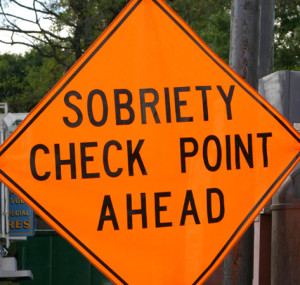Orange County DUI Checkpoint in Dana Point yields no arrests
Orange County DUI Checkpoint in Dana Point yields no arrests
The Orange County Sheriff’s Department announced today that the Orange County DUI Checkpoint in Dana Point yielded no arrests during the checkpoint held on April 3 and April 4, 2015). That Orange County DUI Checkpoint stopped and screened 623 drivers.
Having no arrests is consistent with prior statistics for Orange County DUI Checkpoints, which often lead to a zero arrest rate. That is for various reasons, including the fact that the DUI checkpoint typically has to be announced ahead of of time, and that a DUI checkpoint is a particularly inefficient method of finding and arresting those under the influence. Looks like this Easter DUI checkpoint resulted in a big goose egg for law enforcement.
Why does law enforcement have Orange County DUI Checkpoints?
DUI Checkpoints are even admitted by law enforcement to be less effective than other means of removing drunk drivers from the road. But, even though DUI checkpoints don’t work, police state they had a deterrent effect preventing people from driving in the first place. The truth is that funding in grants from the California Office of Traffic Safety (OTS), MADD, and the Federal Government ensure DUI checkpoints are used first before other measures.
Are DUI Checkpoints legal?
The US Supreme Court, as well as DUI laws in California, makes DUI checkpoints legal, as long as they follow certain criteria, including:
- Decision making by supervisors: This is important to ensure that checkpoints aren’t set up in “arbitrary and capricious” locations. The court didn’t say so, but we’re guessing they wanted to avoid any accusations of racial profiling.
- Limits on discretion of field officers: The theme of distrust of the officer continues. Strict procedures and a random selection of drivers according to a preset pattern (every third driver, for example) are suggested to avoid abuse.
- Maintenance of safety conditions: We’re not sure how it applies to constitutionality, but the court wanted lots of bright lights and signs.
- Reasonable location: The location should be based on relevant factors, such as areas with high incidences of DUI or DUI accidents.
- Time and duration: There are no hard and fast rules, but the timing should be set to optimize the effectiveness of the checkpoint. In other words, put ’em up when the drunks are out.
- Indications of the official nature of roadblock: This is more babble about bright lights and warning signs. They do mention that the lights and signage should be visible for the sake of notification to the drivers. Drivers also can’t be pulled over for avoiding the checkpoint, unless they violate a law to do so.
- Length and nature of detention: The time of the stop should be minimized as to infringe on a person’s rights as little as possible. That means peek at the eyes, smell for booze, and look for cans. If there are no signs of intoxication, the driver should be let go. If they look or smell drunk, field sobriety tests are appropriate.
- Advance publicity: Ingersoll was in favor of advance publicity. It referred to the deterrent effect and stated that the notice minimizes intrusiveness to a person’s rights. In 1993, the court in People v. Banks stated that publicity was not a requirement, but it certainly helps.
Contact us
Contact our firm if you have any questions about Orange County DUI Checkpoints.


